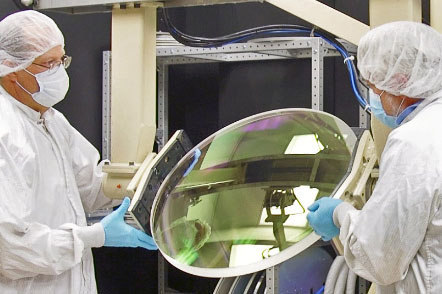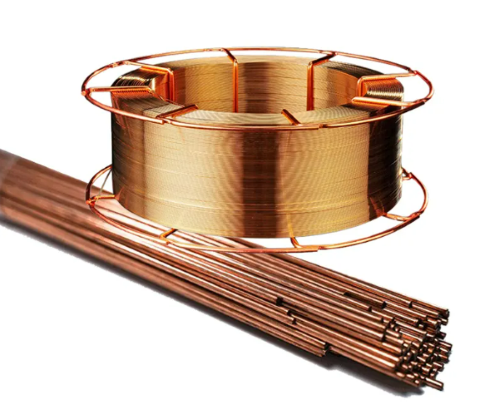Air Quality Revolution: APRN's AI-Driven Spherical Powder Technology
Abstract:
The new Atmospheric Pollution Remediation Networks (APRN) aims to solve urban air pollution using advanced spherical powders, autonomous drones, and AI algorithms. These custom powders target and eliminate various air pollutants. The powders are dispensed by a network of autonomous drones and stationary devices guided by AI and real-time sensor data.
Methodology and Implementation
APRN manufactures ultra-efficient powders to absorb and neutralize targeted pollutants. These powders are deployed via drones and fixed devices to high pollution areas. Distribution is determined by AI algorithms using real-time air quality data, ensuring efficient pollution reduction.
Significance and Impact
APRN's approach could significantly improve health and environmental conditions by mitigating urban air pollution. This innovative strategy employs spherical powders, unmanned aerial systems (UAS), and AI, offering a sustainable and scalable solution. By enhancing air quality, APRN aims to reduce the adverse effects of pollution on human health and the environment.APRN presents a promising solution to global urban air pollution using advanced technology. Its comprehensive approach seeks to improve air quality and mitigate the negative impacts on health and the environment.
Article:
The growing menace of air pollution in urban cities is a cause for concern as it has serious health and environmental repercussions. Atmospheric Pollution Remediation Networks (APRN) take a new spin on tackling this issue by amalgamating cutting edge spherical powders, self-organizing drones and AI systems. This advanced technology could help proximate air quality and limit the harmful effects of pollutants on human health and the environment.
Background and Methodology
For example, a special type of spherical powder is used to target and neutralize airborne pollutants in the APRN system. These are powders that react chemically when exposed to certain pollutants, reducing them to a harmless or less harmful state. The powders are distributed by a constantly roaming fleet of autonomous drones and stationary devices scattered about city districts.
These sensors located onboard the drones and stationary devices enable them to monitor data about air quality in real-time and identify hotspots where pollution is present. This data feeds into an AI system, which analyzes the information and decides how best to deploy the spherical powders. The AI algorithms consider wind patterns, weather conditions and pollution concentrations to make sure the remediation efforts are as effective as possible.
Potential Benefits and Implications
It is a leading tool for the capture, and neutralization of air pollutants compared to other regular filtration technologies and here is one of those technologies, which lies under divisional powder technology. The method is enabled by the properties of spherical powders, which exhibit high surface area and catalytic reactivity in conjunction with an ability to autonomously deploy and be distributed through artificial intelligence. This makes aerosolized spherical powders preferable when compared to traditional air filters.
Increased Surface Area and Chemical Reactivity
Among the chief benefits of spherical powders is their incredibly high surface area-to-volume ratio. These powders are made of numerous little spherical particles, each presenting a big surface area compared to its size. When aerosolized, these spherical powders offer a very high cumulative surface area, allowing them to more effectively trap and absorb pollutants than traditional filters.
Moreover, the powders were found to be of a spherical shape that promotes some aspects of their chemical activity. Due to the larger number of reactive sites, the particles formed by our system are pretty curved, and thus in a significant part easier to activate with pollutants. They cause harmful substance neutralization, making them nonpoisonous and thereby preventing their rejection to the environment.
Autonomous Deployment and AI Optimization
The effectiveness of traditional air filtration systems is limited at best because these systems are often static - meaning in areas where pollution levels change and conditions fluctuate, these systems simply cannot keep up. Spherical powder technology overcomes this limitation with a fully automated dispensing system that utilizes artificial intelligence (automation) to maintain the integrity of the powders.
The deployment system of a Four Winds air purifier utilizes advanced sensors and AI algorithms that constantly monitor air quality and performance. The device can subsequently institute a controlled release of the spherical powders at respective locations so that sufficient spatial coverage is achieved to maximize pollutant capture. This flexibility enables an intelligent approach to air purification that can adapt in real time, meaning resources are utilized most efficiently.
The AI algorithms can further analyze historical data, weather patterns, and a variety of pollutant sources to predict future air quality changes and deploy the powders in advance of potential pollution events. It also helps ensure that pollutants do not build up in the first place, and this predictive feature adds an extra layer of effectiveness to the system.
Spherical Powder Technology represents the first genuine breakthrough for air purification - a superior alternative to conventional filtering methods. This technology can improve air quality and reduce the harmful impacts of air pollution, thanks to its larger surface area, improved chemical reaction capacity, and AI-driven autonomous deployment features. Spherical powder technology is set to repeat its progress in becoming an integral part of a sustainable environment and a healthy life due to ongoing research and development in this field. APRN could have significant implications that reach beyond air pollution in urban areas. The ability of APRNs to zero in on, and effectively neutralize pollutants, provides hope for safer air across the globe - with cleaner air comes a decrease in respiratory illnesses, heart problems and other hazardous health concerns linked with pollution. Finally, it could help make our cities clean and sustainable with the help of APRN. The benefits of cleaner air also extend beyond human health and into ecosystems where it helps in mitigation of the negative effects of air pollution on flora and fauna in urban areas.
Challenges and Future Developments
Challenges There is much promise in the APRN role; however, there are obstacles to the full implementation. One of the greatest problems remains in successfully designing and manufacturing inexpensive, green spherical powders with an effective coverage for different pollutants. Finally: The deployment and removal of these powders thereafter must also be done safely to not cause any unintended environmental results.
A further difficulty is in assembling all the building blocks of an APRN system, which include drones, stationary infrastructure, sensors and AI algorithms. These components together need to be communicated well and share the data amongst themselves smoothly, or else it can lead to the failure of the system on a large scale.
Nonetheless, the possible advantages of APRNs lends itself to a compelling area for future research and improvement. As material science, drone technology and AI improves in the future we envision that APRN systems could potentially advance to be far more efficient and resilient, which in turn would result in a cleaner and healthier urban environment.
Conclusion
Promising Urban Network-based Air Pollution Remediation (APRN) Concept APRN melds innovative spherical powder formulations; bespoke unmanned aerial vehicles and hybrid propulsion systems; with sophisticated AI logistics software for a focussed, efficacious urban air quality management remedy. This will still take a while but to have faster and more sustainable progress some challenges need to be addressed, however the possible impact - better public health & a cleaner environment -, justifies further research and development regarding this technology.
This is a submission for SAM's 2024 Scholarship on spherical powder, written by David Vasquez.
Biography:
I worked in Healthcare for over 3 years designing software to improve human health through technology. It is glaringly obvious that for countries to increase longevity air quality is a top priority. Poor air quality is a risk factor for numerous cancers. I’ve worked with all kinds of technologies but I have not worked with Spherical Powder technology for an extended period of time. However, using Spherical Powders in robotics and air filters to increase air quality is a use case with lots of potential.



